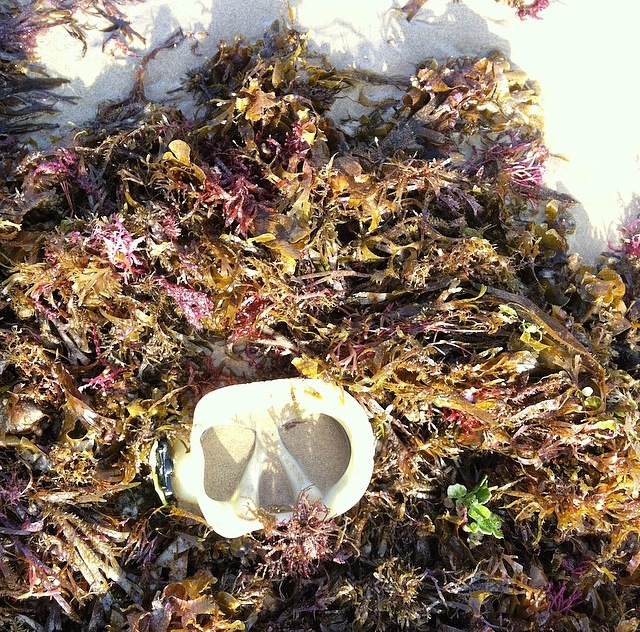
by Tanya Keam | Oct 24, 2016 | Acupuncture, Chinese medicine, Client information, Daily Rituals, DIY Wellness Tips, Exercise, Fitness, Immune Support, Liver Health, Mental health, Nambour, Nature, Nutrition, Seasonal living, Spring, Stress, Sunshine coast, Wellness
We live in one of the most fittest and healthiest places in Australia. We often have triathlon events, surfers at Noosa, runners on Alex hill, mountain climbers on Ngun Ngun, dog walking at Kawana and health cafes popping up everywhere. Who wants to stay inside on a sunny weekend? NO ONE!
Spring is the season of regeneration and growth and connects to the liver organ. The days become longer and we want to spend more time outside, especially living on the beautiful Sunshine Coast!
Here are some tips and strategies fitness wise and to support liver health:
From a Western medicine perspective, the liver is a very important organ that stores blood, produces bile, processes toxins and aids in our immune function.
From a Chinese medicine perspective, it also has a major influence on the smooth flow of energy (life force) to move throughout our bodies. When something blocks this energy flow such as lack of exercise, stress, pent up emotions or an unhealthy lifestyle; the liver becomes agitated/blocked/stuck, which can lead to symptoms such as irritability, insomnia, PMS, tight muscles, mood swings, digestive discomfort, pain in the body and headaches.
So what can you do to your liver energy/life force to flow smoothly in the face of every day activities?
Exercise: The best way to get your energy moving is to move! Different types of exercise suit different people. Some people do really well with vigorous exercise such as long runs or high intensity interval training (HIIT), while other people are more suited to slower, gentle forms of movement such as walking or yoga. I have personally found a mix of both types of exercise to be beneficial. If the gym is a bore, then find something you enjoy, it might even be a group fitness class where you can meet new people. This spring I’m into swimming, yoga, running and resistance exercises. Get those endorphins flowing !!!!
Diet: It is important to eat foods that will cleanse and improve overall liver function. Sour flavours belong to the liver/gallbladder function. Having a squeeze of lemon in warm water first thing in the morning invigorates the liver to get moving for the day and vinaigrette dressings can be added to salads. Leafy greens such as kale, lettuce, spinach and chard support liver detoxification pathways. Artichokes contain a flavonoid which is a strong antioxidant – meaning prevention and cleansing of free radical damage to cells. Try to reduce the amount of dairy, alcohol, greasy and deep fried foods, and excessive salt.
Manage stress – Stress plays a part in all of our lives, and a small amount is healthy, but its just how we manage it all that counts. Dealing with issues, conflict in relationships, pent up emotions, work situations etc. Seek professional support if needed but otherwise have a ‘self care’ approach to your day to day lives. Rest when you need to, have health treatments such as acupuncture or massage, exercise, take moments to be in nature and soak up some vitamin D, express how you feel, plan your day and week ahead.
It’s the little things that count. See you in the pool!
Take care,
TK x
Tanya Keam Wellness is an experienced health clinic in Nambour on the Sunshine Coast. Helping you to feel better in all aspects of your health and wellbeing.

by Tanya Keam | Sep 12, 2016 | Authentic self, Client information, Daily Rituals, DIY Wellness Tips, Emotions, Exercise, Mental health, Muscle pain, Nambour, Rehabilitation, Sleep, Spiritual growth, Stress, Wellness, Yoga
Why I recommend Yoga
I was lucky enough to spend time in India doing my yoga teacher training with people from all walks of life. Yoga includes breath control, simple meditation, and the adoption of specific bodily postures, for health and relaxation.
Yoga can improve all areas of you health and wellbeing
Yoga is simply about connecting with yourself through mindful exercise, using breath. Just because you cant touch your toes or get yourself into bizarre postures that yoga pictures are known for, doesn’t mean the practice of yoga cannott improve your life. Start with a simple beginner class once a week to learn some simple postures and breathing techniques and then go from there!
You can benefit from:
Well rested sleep
Increased circulation
Better flexibility
Better posture
Improved balance
More strength
A toned body
More energy
Head clarity
Relaxation and peace
Pregnancy discomfort and birth preparation
Better sex
Lower blood pressure
Increased lymph flow
Increased metabolism
Better digestion
Reduced pain
Improvement for other sports
Better respiration
Reduced stress and anxiety
An inner calmness
Improve your outlook on life
A better connection with yourself – physically, mentally, emotionally, spiritually
There are MANY styles of yoga classes all over the Sunshine Coast – just try a few and see which teacher and class best suits you.
Take care of you, see you in the clinic,
TK xx
Tanya Keam Wellness is an experienced health clinic on the Sunshine Coast. Helping you to feel better in all aspects of your health and wellbeing.

by Tanya Keam | Apr 12, 2016 | Acupuncture, Authentic self, Client information, Daily Rituals, DIY Wellness Tips, Emotions, Mental health, Nambour, Nature, Nourishing, Spiritual growth, Sunshine coast, Wellness
When you’re feeling a bit down, low energy, stressed, emotional or disconnected.. Here’s a few tips to nurture yourself:
Practice daily exercise, mix up it up with different types – walking, yoga, bike riding, mountain climbing, swimming, resistance training
Eat a nutritious well balanced diet – eat regular meals so that your blood sugar levels are maintained
Have a positive mindset, wake up with a happy intention
Spend time in nature
Surround yourself with positive and like-minded people
Take a bath with oils and epsom salt
Read a new book… and finish it
Join a community group – dancing, fitness, book club
Journal ideas, thoughts and emotions
Learn something new
Talk to a friend or a professional if you don’t feel like your coping or just need to get things off your chest
Go to a comedy show and have a good laugh with good friends
Be kind to yourself – go to bed early and rest when you need to
Respect yourself with boundaries
Look in the mirror and smile at yourself
Make yourself a cup and tea and sit outside in the sunshine
Practice conscious breathing and meditation or go to a tai chi class
Get some vitamin D and go for a swim in the ocean
Let go of criticism toward yourself and others
Have a health treatment such as acupuncture, massage, kinesiology
Spend time with animals, take a friends dog for a walk
Do something creative with your hands
Turn the television off and sit outside under the stars
Cook yourself your favourite food
Recognise all the good things in your life!
“If you can’t change something, change your attitude” – Maya Angelou
Take care of you, see you in the clinic,
TK xx
Tanya Keam Wellness is an experienced health clinic on the Sunshine Coast. Helping you to feel better in all aspects of your health and wellbeing.

by Tanya Keam | Nov 10, 2015 | Client information, Daily Rituals, DIY Wellness Tips, Holidays, Nourishing, Sleep, Stress, Wellness
Full-time work is 38.5 hours a week for the average adult in Australia. Some, if not most, juggling more hours to make financial ends meet, FIFO, studying, being a parent, running a business etc. In my line of work/lifestyle of the health field, I personally NEED time to rejuvenate and replenish myself so I can be the practitioner I need to be physically, mentally, emotionally and spiritually. But everyone needs rest and time to rejuvenate.
Maintaining work-life balance can be HARD but with careful planning it
CAN BE DONE!
I recently went on a spontaneous trip with a friend up to the Northern Territory for an unplanned road trip. All we booked were our flights and one of those outrageous Wicked Campers you see with funny and inappropriate slogans painted across the vehicle. We packed the car with healthy food, electrolytes, bush walking shoes, sunscreen, litres of water and our swimming gear and set off south east down the Stuart Highway from Darwin. We had 4 full days to visit national parks, sleep under the stars, visit indigenous landmark paintings, meet the locals, climb mountains to hidden waterfalls and hear about the history of certain areas. But most importantly really see this A M A Z I N G country, turn our phones off and not check the time.
Tips to make weekends away possible
> Prioritise your tasks – write lists for what needs doing (use a daily diary), plan the day and week ahead. Instead of getting overwhelmed, take a pause and ask yourself what is more important to you in the current situation. Make conscious decisions and feel happy about them.
> Delegate times and set boundaries of your day to certain areas – for example: 5-8pm is time spent with kids, run errands once/twice a week, exercise before work.
> Cut back on expenses (even short term) on things you don’t necessary need right now – put that money aside for emergencies or something fun!
> Trust and delegate work environments – prepare and be organised for other staff to run the show while you are away.
> Get 6-8hours of unbroken sleep a night – if our bodies are not resting well, our mind cannot function well.
> Set a goal – “At the end of this 3 month block I will go away for a long weekend”.
> Remove guilt – have realistic expectations of yourself. Pat yourself on the back when you know you’ve done your best and you are managing things nicely. No one is superman/woman so ask for help when you need it.
> Lastly, book the trip! – get the ball rolling so that other steps will flow and it will all come together. Having something to look forward to keeps you motivated and excited when the grind of the day-to-day gets a bit much.
Take care of you, see you in the clinic,
TK xx
Tanya Keam Wellness is an experienced health clinic on the Sunshine Coast. Helping you to feel better in all aspects of your health and wellbeing.
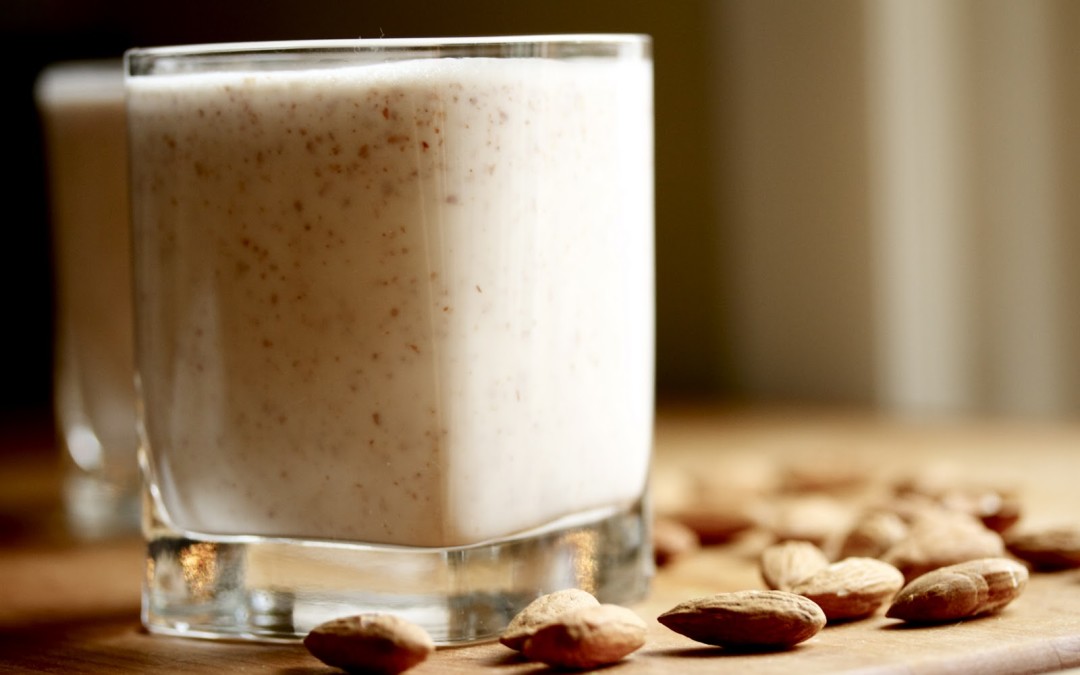
by Tanya Keam | Feb 13, 2015 | Alkaline, Chinese medicine, Client information, Dairy alternatives, Dairy free, DIY Wellness Tips, Homemade, Nourishing, Nutrition, Sunshine coast, Vegan, Vegetarian, Wellness
Why don’t people consume dairy?
1. Some people are lactose intolerant which means their body has an inability to digest lactose, a sugar found in milk and to a lesser extent dairy products (cheese, yoghurt, butter etc), causing side effects. In most cases, symptoms include abdominal bloating and cramps, flatulence, diarrhoea, nausea, rumbling stomach or vomiting.
2. Allergic reactions to dairy
3. Dairy is considered a food that can cause inflammation in the body
4. Ethical reasons behind the production of dairy products
5. Dairy causes digestive discomfort, bloating or loose stools even though they aren’t lactose intolerant
Dairy alternatives are very popular these days and can include:
Almond Milk
Almond milk is a great substitute for milk in every aspect of cooking and baking as well as over cereal, in smoothies or in your morning coffee/cuppa. Creamy, usually just a little sweet, high in vitamin E and other essential nutrients, and more alkaline than other nuts. Almond milk is almost always found in with the other non-refrigerated boxed beverages.
You can also use other nuts such as cashews, brazil or hazelnuts as a nut milk.
These dairy-free milk alternatives are usually not soy-free however, as they almost always contain soy lecithin. You can avoid soy by making your own milk at home!
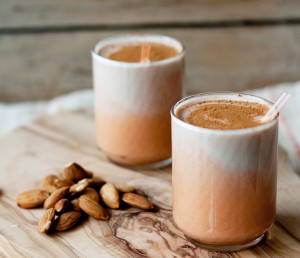
Half a cup of almonds (or other nuts) – soaked in filtered water overnight in the fridge
3 cups of filtered water
Pinch of salt
2 dates
1/4 teaspoon vanilla essence or vanilla bean
Blend on high for 1 minute in a good blender
Strain the liquid through a nut bag or clean mesh cloth
Refrigerate and consume within 3 days
You can make smaller batches if you know you’re not going to get through it all
Coconut Milk
Prepared from fresh coconut meat (flesh), coconut milk is a great option for richer dairy-free dishes. Although it is high in fat and saturated fat (their good fats!), coconut milk is a delicious way to add creaminess to any number of dairy-free dishes. I wouldn’t recommend in your tea or coffee but it goes great in curries, puddings, dairy-free whipped cream or desserts and with your cereal or granola.
Coconut meat can also be made into a yoghurt and flavoured with fruit. The yoghurt is very thick and creamy.
Rice Milk
Rice milk is generally thinner in consistency than nut milks or soy milk, and it has a lighter, sweeter flavour that is perfect for using with cereal or in coffee/tea. While rice milk works well in baking recipes, for using in dairy-free sauce recipes it generally requires some sort of binding or stabilising agent such as agar flakes, eggs, flour or anthem gum. I would recommend to use rice milk in coffee, tea, smoothies or own its own.
Soy milk
Soy milk is made from the soy bean and are a complete protein source and a dietary staple in many cultures. It is one of the richest of non-dairy milk alternatives next to coconut milk, contributing density through fat, fiber and protein while still free of cholesterol and saturated fats. Excellent for baking, cooking, in a glass or over cereal, soy milk is an easy way to add protein and dimension to your recipes.
Soy contains phytoestrogens called isoflavones that may mimic the activity of the hormone estrogen in your body. I would recommend avoiding soy if you have a tendency toward high oestrogen and if you do consume soy, go for non-genetically modified (non-GMO) and certified organic. Perhaps rice or nut milk would suit you better, or just mix it up.
Take care of you, see you in the clinic,
TK xx
Learn more > http://www.tanyakeamwellness.com
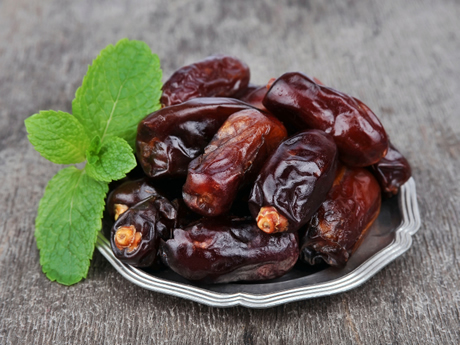
by Tanya Keam | Feb 12, 2015 | Acupuncture, Buderim, Chinese medicine, Client information, Daily Rituals, Deficiency, DIY Wellness Tips, Herbal remedies, Nourishing, Nutrition, Sunshine coast, Wellness, Womens health
Blood deficiency
Is a diagnostic term we use in Traditional Chinese medicine (TCM) for someone who is showing signs and symptoms of inadequate nourishment of the blood within the body. It is not uncommon for women to present with this type of deficiency as women lose blood in every menstrual cycle, however men can also present with it.
Many of the symptoms (below) are similar to iron deficiency anaemia, however the concept of blood in TCM refers more to the quality of the blood in its entirety to nourish the body as a whole. Whereas, anaemia in a Western term relates to deficiencies of folic acid, B12, protein building blocks and other nutrients. It may be beneficial to share with your TCM practitioner if you are aware that you are iron deficient so that dietary changes can be made.
Symptoms include :
Low energy
Blurry vision
Light headedness
Poor memory
Dry eyes, skin and hair
Pale complexion, lips, tongue colour, nails and inside the eyelid
Difficulty falling asleep
Hair loss or premature greying
Women – light or absent periods, migraines/headaches at specific times in the cycle
Tremors, numbness, tics
Weak nails
Anxiety or other mood fluctuations
To correct the deficiency
We first look at where the deficiency is coming from:
1. A diet which is lacking in the appropriate nutrients
2. Poor digestive function (the ability to absorb nutrients)
3. Excessive bleeding (often menstrual but also due to trauma or following surgery)
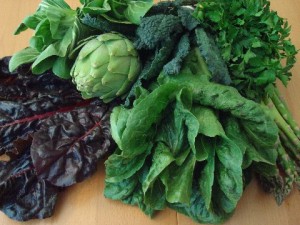
Nutritional support
| Grains |
Barley, corn, oats, rice, sweet rice, wheat, bran |
| Vegetables |
Alfalfa sprout, artichoke, beetroot, button mushroom, cabbage, celery, dandelion leaf, dark leafy greens, kelp, shiitake mushroom, spinach, watercress, wheatgrass |
| Fruit |
Apple, apricot, avocado, date, fig, grape, longan, mulberry |
| Beans/legumes |
Aduki, black soya, kidney, chickpea, red lentils |
| Nuts, seeds |
Almonds, black sesame |
| Fish |
Mussel, octopus, oyster, sardine, tuna |
| Meat |
All red meat especially bone marrow and liver (beef, pork, sheep). Bone broths are particular helpful |
| Dairy |
Chicken egg, |
| Herbs, spices |
Nettle, parsley |
| Oils, condiments |
Amasake, molasses |
| Beverages |
Soya milk |
| Common supplements |
Algae, pollen |

Foods especially useful
| Vegetables |
artichoke, beetroot, dandelion leaf, kelp |
| Fruit |
avocado, date, mulberry, grape |
| Nuts /seeds |
black sesame |
| Fish |
oyster |
| Meats |
beef, liver (both pork and sheep) |
| Herbs/ spices |
nettle |
| Oils/ condiments |
molasse |
Acupuncture
You may be consuming the correct foods, however if your digestive function is depleted than the nutrients are being passed through your stools instead of being transported to the cells around your body. This is where acupuncture comes in!
Acupuncture alone cannot nourish the blood, but it can greatly improve on the digestive function, like giving your body a 10-20% boost in what your digestive function should be doing, thus increasing the absorption of nutrients from food.
Cooking methods
There is also great importance on the way that foods are cooked. To support your digestive system, lightly cooking (steaming, blanching, soups, stews) and consuming warm foods is ideal. Add in some spices to aid digestion such as ginger, cumin, fennel and cardamom.
Herbs and supplements
To support your system further (on top of acupuncture treatments and dietary changes) and to nourish the blood more efficiently, a herbal formula may be developed for your individual situation. Supplements may include iron, vitamin B12, folic acid and to enhance iron absorption vitamin C (lemon juice) may be also taken with foods such as leafy greens.
Take care of you, see you in the clinic,
TK xx
Learn more > http://www.tanyakeamwellness.com
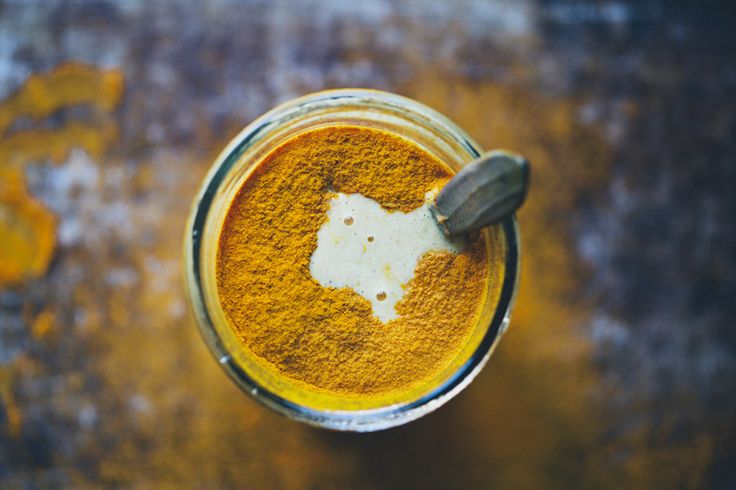
by Tanya Keam | Feb 4, 2015 | Autumn, Chinese medicine, Client information, DIY Wellness Tips, Food, Herbal remedies, Homemade, Immune Support, Immune system, Liver Health, Nourishing, Nutrition, Recipes, Seasonal living, Sunshine coast, Wellness, Winter
Immune Boosting Tumeric Lassi
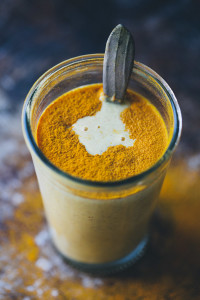
The Benefits of Tumeric
1. Otherwise known as Circuma longa, is a member of the ginger family, Zingaberaceae.
2. A wonderful aspect on the liver. Spring (and late winter) is an important time to consume herbs and foods that strengthen the liver, because spring is the season which rules the liver and gallbladder in Traditional Chinese Medicine. It is said to shrink engorged hepatic ducts, so it can be useful to treat liver conditions such as hepatitis, cirrhosis, and jaundice.
2. Highly valuable for the influence it exerts on the digestive system and the liver. In both Ayurvedic and Traditional Chinese Medicine, it is considered a digestive bitter and a carminative. It can be incorporated into foods, including rice and bean dishes, to improve digestion and reduce gas and bloating. It is a cholagogue, stimulating bile production in the liver and encouraging excretion of bile via the gallbladder. This improves the body’s ability to digest fats.
3. Recommended for chronic digestive weakness and/or congestion. It can be taken as a single extract or in the form of digestive bitters, which combine turmeric with other bitter and carminative herbs. Take either of these twenty minutes before meals, especially meals that are high in protein and/or fat. It is beneficial for people who feel tired after consuming meals or who experience gas and bloating.
4. Anti-inflammatory to the mucous membranes, which coat the throat, lungs, stomach and intestines. Turmeric decreases congestion and inflammation from stagnant mucous membranes. People with the following conditions could benefit from regular use of turmeric: IBS (Irritable Bowel Syndrome), colitis, Crohn’s disease, diarrhea, and post-giardia or post salmonella conditions. It can also reduce the itching and inflammation that accompanies hemorrhoids and anal fissures.
5. Useful to follow up antibiotic treatments, in addition to acidophilus and garlic. It helps to improve the intestinal flora and acts as an anti-bacterial.
6. Turmeric can also benefit skin conditions including: eczema, psoriasis and acne, for it is a potent detoxifier.
7. Turmeric is an antispasmodic to smooth muscles so it reduces digestive and menstrual cramping.
Try adding turmeric to your oatmeal, grains and beans, or take digestive bitters. Whatever way that turmeric is consumed it will benefit both the digestive system and the liver.
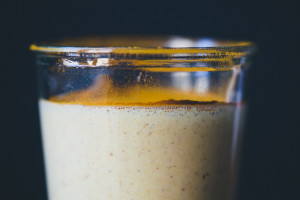
2 large or 4 small glasses
2 cups organic yogurt with active live culture, or dairy or nut milk
2 bananas
2 tsp freshly grated ginger
2 tsp honey, preferably raw (unpasteurized)
1/2 lemon, juice
2 tsp rosehip powder (optional but delicious, and a good C-vitamin boost)
1 tsp vanilla extract or ground vanilla
3-4 tsp ground turmeric (or fresh turmeric root)
Place all ingredients in a blender and mix on high speed until smooth. Add more yogurt if you prefer. Pour the lassi in two large glasses. For a more stunning presentation, dust 1 tsp ground turmeric on top before serving. Add a straw and serve.
Eat well, drink well, take care of you, see you in the clinic,
TK xx
Learn more > http://www.tanyakeamwellness.com
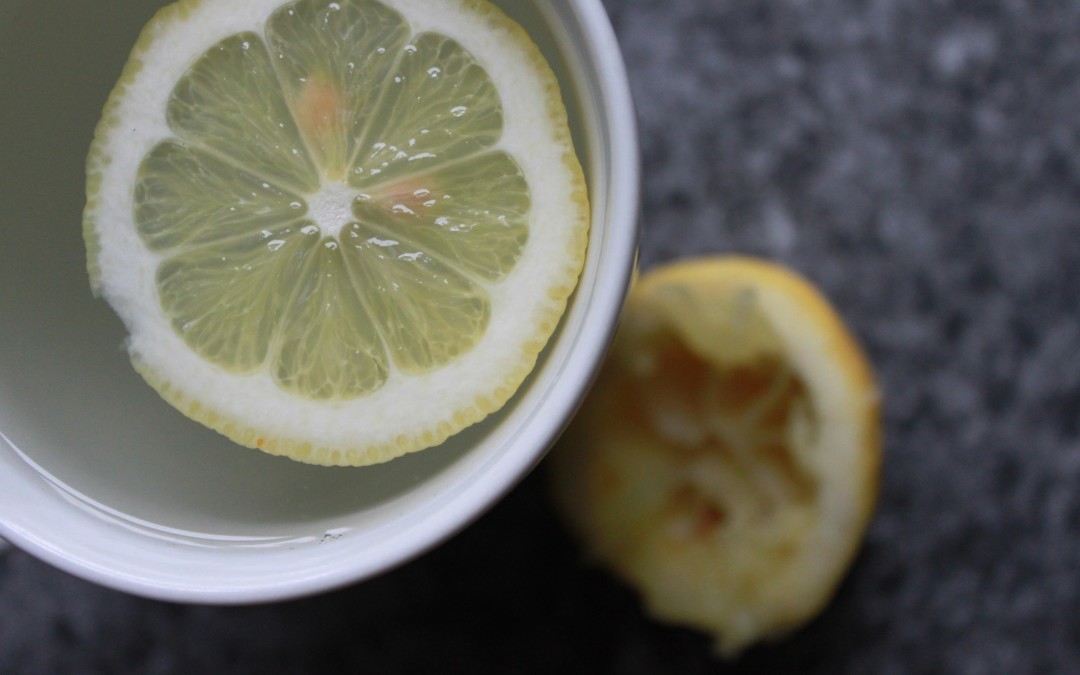
by Tanya Keam | Feb 4, 2015 | Chinese medicine, Client information, Daily Rituals, Dairy free, DIY Wellness Tips, Food, Gut flora, Herbal remedies, Homemade, Liver Health, Nourishing, Nutrition, Recipes, Seasonal living, Sunshine coast, Vegan, Vegetarian, Wellness

The Five Flavours in TCM
Foods are associated with certain specific properties according to their taste. The five flavours TCM recognizes are: sour, sweet, bitter, pungent and salty. These are also linked to the four natures, being temperatures: cold, cool, warm and hot. TCM uses the flavours of food to coincide with the seasons. For example: In winter we enjoy more warm – hot meals to warm us up, and in Summer we enjoy more cool – cold foods to cool us down.
It is thought that lemons originated in China (along with India, Burma and other parts of southeast Asia) so it’s no surprize that the lemon also forms a part of a healthy diet according to Traditional Chinese Medicine (or TCM).
Hot lemon water first thing in the morning is ideal for the liver to get things moving for the day ahead, both energetically, as well as to hydrate the body after 8 hours of sleep, and to stimulate bile to assist the digestive system in breaking down food.

- Lemons are very beneficial for colon health due to the pectin fibres and also serves as a powerful antibacterial
- Lemon is an excellent and rich source of vitamin C, an essential nutrient that protects the body against immune system deficiencies
- It balances maintain the pH levels in the body
- Having warm lemon juice early in the morning helps flush out toxins
- It aids digestion juices and encourages the production of bile
- It is also a great source citric acid, potassium, calcium, phosphorus and magnesium
- It helps prevent the growth and multiplication of pathogenic bacteria that cause infections and diseases
- It helps reducing pain and inflammation in joints and knees as it dissolves uric acid
- It helps shift common cold symptoms
- The potassium content in lemon helps nourish brain and nerve cells
- It strengthens the liver by providing energy to the liver enzymes when they are too dilute
- It helps balance the calcium and oxygen levels in the liver In case of a heart burn, taking a glass of concentrated lemon juice can give relief
- It is of immense benefit to the skin and it prevents the formation of wrinkles and acne
- It helps maintain the health of the eyes and helps fight against eye problems
- Lemon juice helps replenish body salts especially after a strenuous workout session

Tips
Juice a whole heap of lemons in one go and freeze the juice into ice cubes so that they are ready to go each morning
Diluting the juice and brushing your teeth after drinking is advised to prevent tooth enamel decay.
Take care of you, see you in the clinic,
TK xx
Learn more > http://www.tanyakeamwellness.com
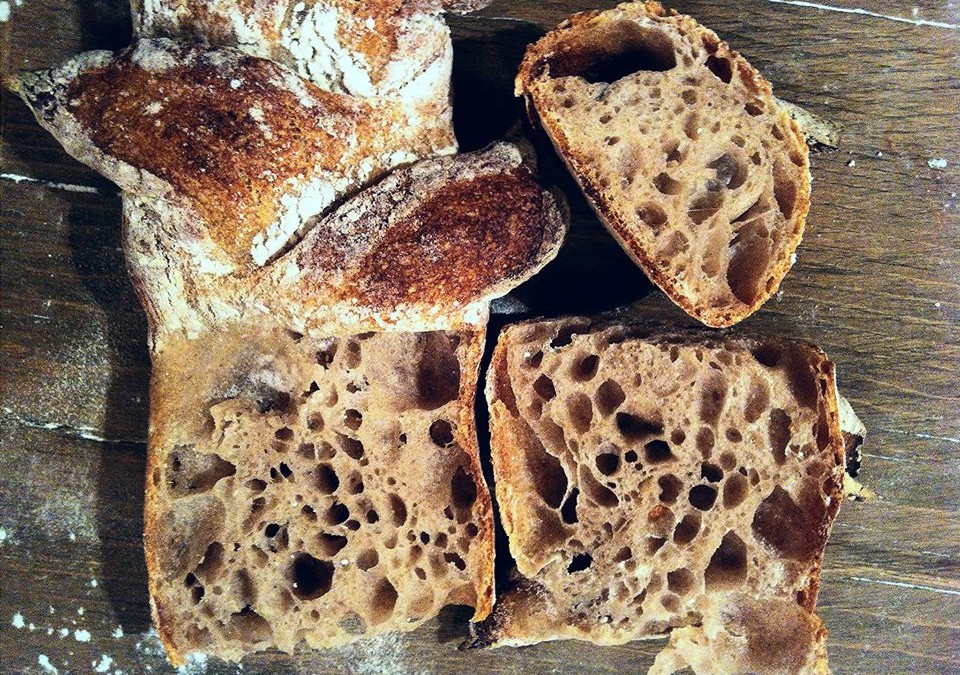
by Tanya Keam | Feb 3, 2015 | Bread, Cultures, DIY Wellness Tips, Fermented, Food, Gut flora, Homemade, Nourishing, Recipes, Sourdough, Sunshine coast, Vegan, Vegetarian, Wellness
Gluten and wheat free diets are becoming increasingly popular by many people these days. However, unless food allergy or sensitivity testing from health partitioners such as Naturopaths, Kinesiologists or General practitioners have been done, I’m not sold on the idea that wheat is the devil completely. The way wheat is processed in Australia though, that’s a whole other story !
In the case of digestive discomfort, pain, bloating, fatigue etc, I suggest to see a healthcare practitioner who can balance your digestive health so that these types of foods are digested well to avoid such symptoms. Acupuncture, Naturopathy and Ayurveda can be of benefit here. Having said that, for some people, wheat is better avoided completely, or only enjoyed 1 -2 times a week. For others, wheat is just too dominant in their diet – it turns out that they are basing all three meals around it. Thus, if this can be reduced, it’s got to be a good thing to use spelt. So here we are.

Spelt flour is a very viable grain to use as it ferments well. It has a lot of natural enzymes and wild yeasts in there, and it holds for a while without turning acid. This is good for the purpose of making bread. Spelt sour dough starters can also be added to other grain sour dough breads. There is gluten is sourdough, however the fermentation process changes glutens form so it is a better option than wheat if you don’t want to be completely gluten free.
So where to start…..
To get the dough to rise, we need to create a fermentation process. Fermentation involves the culture and growth of naturally occurring fungi (yeasts), as well as bacteria and other micro organisms. When fermentation occurs in the dough, carbon dioxide is given off as a natural bi product. Sourdough starter is the thing which begins and feeds the fermentation process in dough, as it is rich in bacteria, enzymes such as amalyse and naturally occurring yeasts. This combination provides a perfect medium for the process called leavening.
There are lots of ways to make bread rise, but they all rely on the same process of fermentation I just mentioned. For example, Baking soda and some sort of acid (cream of tartare, lemon juice or vinegar) will create the necessary chemical reaction to begin fermentation in dough.

The Healthy Cultures
Sourdough starter is also a culture of ‘friendly’ bacteria. This culture helps to create the ideal conditions for the yeasts to multiply, by dealing with some of the bi products of the cell division process. They keep everything clean and moving freely – kind of like cultural street sweepers.
A healthy Sourdough Starter has a relatively stable microbiology; it’s a living thing which, with the right conditions, can be trained to produce consistent and great tasting bread every time. Not only that, but most experts agree that sourdough bread is easier to digest and provides better nutrition than ordinary yeasted breads.
How to avoid Candida Albans
Unfortunately, commercial yeast is designed to be very bland in flavour. It won’t survive lactic acid either, which is present in all sourdough cultures. Cervisea can trigger infections within the body when left to reproduce in the stomach of a human being. The temperature inside us, combined with our intake of sugar and liquids, can prove to be ideal for the growth of candida albicans; a common form of yeast infection leading to many allergic reactions and gradual immune system depletion. When you couple the use of refined yeast with yeast foods such as Bread Improver, the potential for long term ill health is multiplied many times. Sourdough starter can be made quite easily to replace commercial yeast or baking powder to make the dough rise when you want to make home made bread.

Step 1
Sourdough starter has the simplest of recipes:
- one part flour to one part water!
You can try just about any kind of flour (or even cooked grain). The rule of thumb is consistency – it should be a very thick batter to start with, so it just pours.
If it’s runny, it’s too thin, and if it’s a dough, it’s too thick. You can vary the consistency later, when you know what you’re doing. But for now, work within these parameters for best results.
14 day fermentation.

In the early stages
The starter is very fragile – but over time they grow stronger, as local yeasts and bacteria take hold. The most important thing in the early days is not to ‘drown’ the starter with too much food. It’s better to leave it alone to do its thing than to fuss over it all the time.. so wait another day. Lash out if you like – wait two! What the heck! Wait a week. It’ll be better for it!

Some tips before you try the recipe
- In the early stages of fermenting a starter, you’ll get some wastage, as you need to pour off some of the batter as you go, in order to feed it with fresh food. This batter you pour off can be used in your regular yeasted dough or a pancake mix.
- To minimise wastage, start very, very small. We’re talking a tablespoon of flour to start with.
- The warmer the starter gets, the more activity there is, and so the more often you’ll need to feed it.
- The lower the temperature, the slower the fermentation process. If the temperature is too low, fermentation will be overtaken by mould and the starter will become suffocated. However, even at temperatures below 5 degrees celsius but above freezing, fermentation can still be occurring. The mould which grows on the surface will dry out, and can be peeled off and discarded to no ill effect. The remaining batter can be fed and re established quite quickly, and become active and useful again virtually overnight. In fact, the healthy starter underneath the mould is often ready for use straight away. If unsure, feed with just a bit of flour and wait a few hours.
- The flavour of starter is strongly influenced by the amount of times it passes through a certain temperature threshold – sourdough starter becomes more sour each time it returns to a chilled state after being fully thawed. It will also become more sweeter hen fed more frequently, but will take longer to leaven your dough.
-
Equally, the flavour is also influenced by how thick the starter is – if it’s made as a dough or thicker, it will ferment slowly but will make more full flavoured, classic sourdough bread.
A home for your starter
If you have a plastic container with a loose fitting lid, about 2 litres capacity, then you have the perfect vessel for starter to live in. If you only have, say, a small jar with a tight sealing lid, then puncture the lid with a knife so a little air can pass through.

Ultimately, this will become your starter’s abode. It lives in your refrigerator between uses, and will be left out before use to thaw slightly, so as activity is happening. If you are in a warm climate in mid summer, you will need to only bring the starter out of the fridge for an hour or less when you are making bread. If you live in a cold climate, the starter may live out of the fridge all the time. This of course something which you will adapt according to your experience – but I have found that the fridge is the best default storage area, as they run at a consistent temperature and are reasonably immune from airborne contaminants.

Happy fermenting!
Take care of you, see you in the clinic,
TK xx
Learn more > http://www.tanyakeamwellness.com
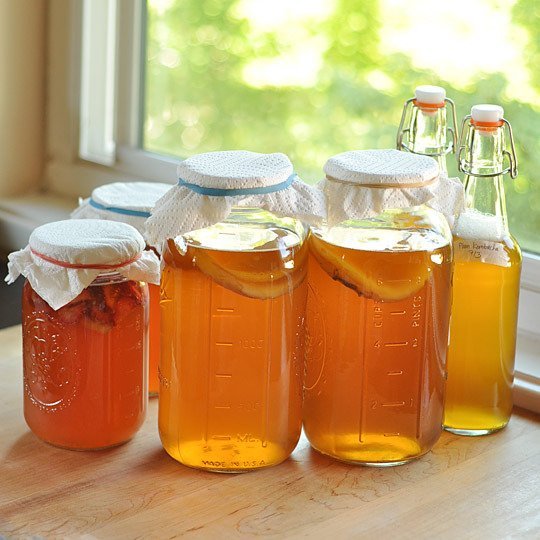
by Tanya Keam | Jan 19, 2015 | Client information, Cultures, DIY Wellness Tips, Fermented, Food, Gut flora, Kombucha, Nourishing, Nutrition, Probiotic drink, Recipes, Sunshine coast, Vegan, Vegetarian, Wellness
What Is Kombucha Tea?
The first recorded use of Kombucha was in 221 B.C. during the Chinese empire of the Tsin-Dynasty. They called it “The remedy for immortality” or the “divine tische”. It is a living health drink which has been used for thousands of years to help stimulate the metabolism and maintain a healthy immune system.
Kombucha starts out as a sugary tea, which is then fermented with the help of a scoby. “SCOBY” is actually an acronym for “symbiotic culture of bacteria and yeast.”
The scoby bacteria and yeast eat the majority of the sugar in the tea, transforming the tea into a refreshingly fizzy, slightly sour fermented (but mostly non-alcoholic) beverage that is relatively low in calories. Flavours can be added to the Kombucha such as ginger, pear or blackberries.
The SCOBY
Let’s talk about that scoby. It’s weird, right?! It floats, it’s rubbery and slightly spongy, brown stringy bits hang from it, and it transforms sugary tea into something fizzy and sour. It’s totally weird. But if you take a step back, it’s also pretty awesome.
There are a lot of theories about why the bacteria and yeast form this jelly-like layer of cellulose at the top of the kombucha. The most plausible that I’ve found is that it protects the fermenting tea from the air and helps maintain a very specific environment inside the jar that is shielded from outsiders, aka unfriendly bacteria.
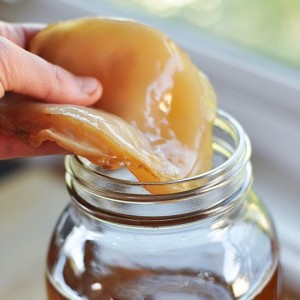
Probiotics?
Which brings us to the next question: what’s actually in kombucha? Kombucha is indisputably full of probiotics and other happy things that our intestines love and that help boost our overall health.
How to Make Kombucha Tea at Home
Makes about 4 litres
What You Need
Ingredients
4.5 cups of filtered water
1 cup white sugar or raw brown sugar – The less processing the better
8 bags black tea (or 2 tablespoons loose tea) – I prefer English Breakfast tea
2 cups starter tea from last batch of kombucha or store-bought (unpasteurized, neutral-flavoured) kombucha
1 scoby per fermentation jar
Optional flavouring extras for bottling: 1 to 2 cups chopped fruit, ginger, turmeric, lime, 2 to 3 cups fruit juice, 1 to 2 tablespoons flavoured tea (like hibiscus or Earl Grey), 1/4 cup honey, 2 to 4 tablespoons fresh herbs or spices
Equipment
Stock pot
A jar big enough to hold 4 cups of water with room spare
Bottles: Six 16-oz glass bottles with plastic lids, 6 swing-top bottles, or clean soda bottles
Small funnel
Instructions
Note: Avoid prolonged contact between the kombucha and metal both during and after brewing. This can affect the flavour of your kombucha and weaken the scoby over time.
1. Make the Tea Base: Bring the water to a boil. Remove from heat and stir in the sugar to dissolve. Drop in the tea and allow it to steep until the water has cooled. Depending on the size of your pot, this will take a few hours. You can speed up the cooling process by placing the pot in an ice bath.
2. Add the Starter Tea: Once the tea is cool, remove the tea bags or strain out the loose tea. Stir in the starter tea. (The starter tea makes the liquid acidic, which prevents unfriendly bacteria from taking up residence in the first few days of fermentation.)
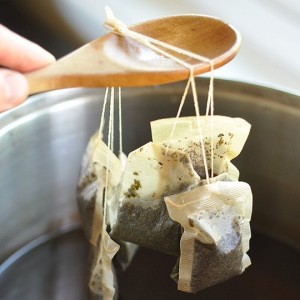
3. Transfer to Jars and Add the Scoby: Pour the mixture into your glass jar and gently slide the scoby or fermented little bits that will be floating in the bottom of a store bought kombucha, into the jar with clean hands. Cover the mouth of the jar with a few layers of cheesecloth or paper towels secured with a rubber band.
4. Ferment for 7 to 10 Days: Keep the jar at room temperature, out of direct sunlight, and where it won’t get touched or moved around. Ferment for 7 to 10 days, checking the kombucha and the scoby periodically.
It’s not unusual for the scoby to float at the top, bottom, or even sideways. A new cream-colored layer of scoby should start forming on the surface of the kombucha within a few days. It usually attaches to the old scoby, but it’s ok if they separate. You may also see brown stringy bits floating beneath the scoby, sediment collecting at the bottom, and bubbles collecting around the scoby. This is all normal and signs of healthy fermentation.
After seven days, begin tasting the kombucha daily by pouring a little out of the jar and into a cup. When it reaches a balance of sweetness and tartness that is pleasant to you, the kombucha is ready to bottle.
5. Remove the Scoby: Before proceeding, prepare and cool another pot of strong tea for your next batch of kombucha, as outlined above. With clean hands, gently lift the scoby out of the kombucha and set it on a clean plate. As you do, check it over and remove the bottom layer if the scoby is getting very thick.
6. Bottle the Finished Kombucha: Measure out your starter tea from this batch of kombucha and set it aside for the next batch. Pour the fermented kombucha (straining, if desired) into bottles using the small funnel, along with any juice, herbs, or fruit you may want to use as flavouring. Leave about a half inch of head room in each bottle. (Alternatively, infuse the kombucha with flavourings for a day or two in another jar covered with cheesecloth, strain, and then bottle. This makes a cleaner kombucha without “stuff” in it.)
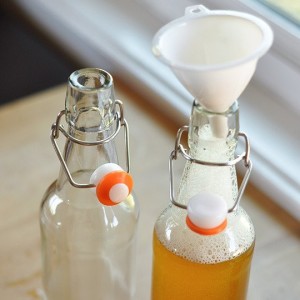
7. Carbonate and Refrigerate the Finished Kombucha: Store the bottled kombucha at room-temperature out of direct sunlight and allow 1 to 3 days for the kombucha to carbonate (the added fruit you added allows for a second fermentation process which is where it becomes carbonated). Until you get a feel for how quickly your kombucha carbonates, it’s helpful to keep it in plastic bottles; the kombucha is carbonated when the bottles feel rock solid. Refrigerate to stop fermentation and carbonation, and then consume your kombucha within a month. It is a good idea to open the bottle to let some gas/air bubbles out otherwise it will explode like a Champaign bottle!
8. Make a Fresh Batch of Kombucha: Clean the jar being used for kombucha fermentation. Combine the starter tea from your last batch of kombucha with the fresh batch of sugary tea, and pour it into the fermentation jar. Slide the scoby on top, cover, and ferment for 7 to 10 days.
Additional Notes:
• Batch Size: To increase or decrease the amount of kombucha you make, maintain the basic ratio of 1 cup of sugar, 8 bags of tea, and 2 cups starter tea per 4 cups water batch. One scoby will ferment any size batch, though larger batches may take longer.
• Putting Kombucha on Pause: If you’ll be away for 3 weeks or less, just make a fresh batch and leave it on your counter. It will likely be too vinegary to drink by the time you get back, but the scoby will be fine. For longer breaks, store the scoby in a fresh batch of the tea base with starter tea in the fridge. Change out the tea for a fresh batch every 4 to 6 weeks.
• Other Tea Options: Black tea tends to be the easiest and most reliable for the scoby to ferment into kombucha, but once your scoby is going strong, you can try branching out into other kinds. Green tea, white tea, oolong tea, or a even mix of these make especially good kombucha. Herbal teas are ok, but be sure to use at least a few bags of black tea in the mix to make sure the scoby is getting all the nutrients it needs. Avoid any teas that contain oils, like earl grey or flavored teas.
• Avoid Prolonged Contact with Metal: Using metal utensils is generally fine, but avoid fermenting or bottling the kombucha in anything that brings them into contact with metal. Metals, especially reactive metals like aluminum, can give the kombucha a metallic flavor and weaken the scoby over time.
Troubleshooting Kombucha
• It is normal for the scoby to float on the top, bottom, or sideways in the jar. It is also normal for brown strings to form below the scoby or to collect on the bottom. If your scoby develops a hole, bumps, dried patches, darker brown patches, or clear jelly-like patches, it is still fine to use. Usually these are all indicative of changes in the environment of your kitchen and not a problem with the scoby itself.
• Kombucha will start off with a neutral aroma and then smell progressively more vinegary as brewing progresses. If it starts to smell cheesy, rotten, or otherwise unpleasant, this is a sign that something has gone wrong. If you see no signs of mold on the scoby, discard the liquid and begin again with fresh tea. If you do see signs of mold, discard both the scoby and the liquid and begin again with new ingredients.
• A scoby will last a very long time, but it’s not indestructible. If the scoby becomes black, that is a sign that it has passed its lifespan. If it develops green or black mold, it is has become infected. In both of these cases, throw away the scoby and begin again.
• To prolong the life and maintain the health of your scoby, stick to the ratio of sugar, tea, starter tea, and water outlined in the recipe. You should also peel off the bottom (oldest) layer every few batches. This can be discarded, composted, used to start a new batch of kombucha, or given to a friend to start their own.
• If you’re ever in doubt about whether there is a problem with your scoby, just continue brewing batches but discard the kombucha they make. If there’s a problem, it will get worse over time and become very apparent. If it’s just a natural aspect of the scoby, then it will stay consistent from batch to batch and the kombucha is fine for drinking.
Brewing Kombucha Safely
And while the homebrewed nature of kombucha makes some home cooks nervous, is unlikely that kombucha will ever make you sick. Like all things, you need to use common sense when brewing it and pay attention to what you’re doing. It’s natural to feel nervous and unsure at first. Bottom line: if the scoby is healthy, then the kombucha will be healthy.
Is There Alcohol in Kombucha?
Kombucha does contain a little bit of alcohol as a by-product of the fermentation process. It is usually no more than 1%. Unless you drink a lot of it back to back, you won’t get drunk. But people with alcohol sensitivities should be aware of its presence.
I’m breaking the kombucha-making process into very small steps here. It looks long and complicated, but this is actually a very straightforward and streamlined process. Once you get into the rhythm of it, bottling a finished batch of kombucha and preparing the next only takes about 20 minutes every 7 to 10 days.
Where to Find Kombucha Brewing Supplies
You can use regular, store-bought tea and sugar for brewing kombucha. You can pick up a scoby from a kombucha-brewing friend or even make your own. They are available online also, however give starting your own from scratch a go!
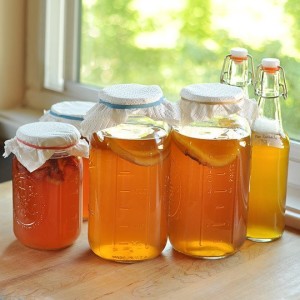
Have fun ! Take care of you, see you in the clinic,
TK xx
Learn more > http://www.tanyakeamwellness.com






